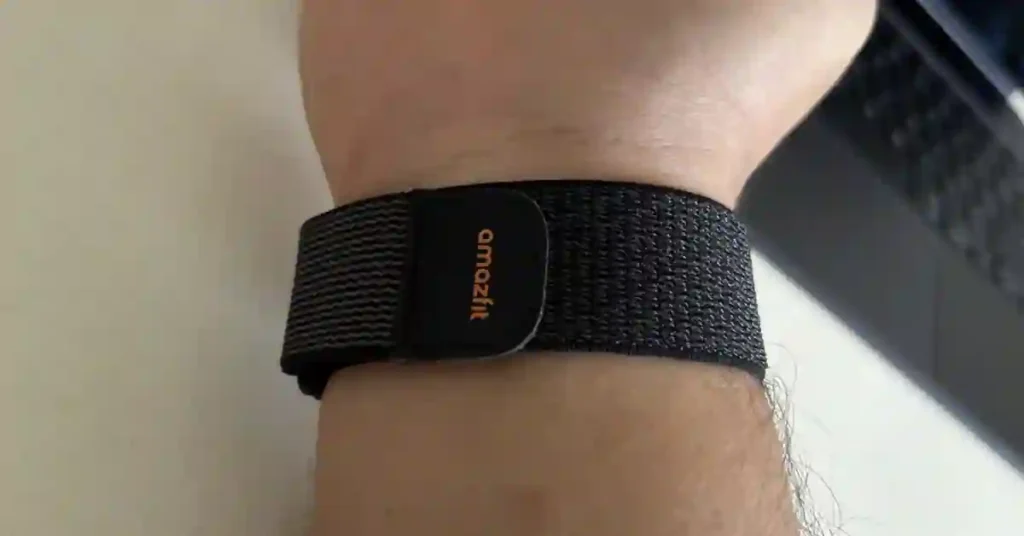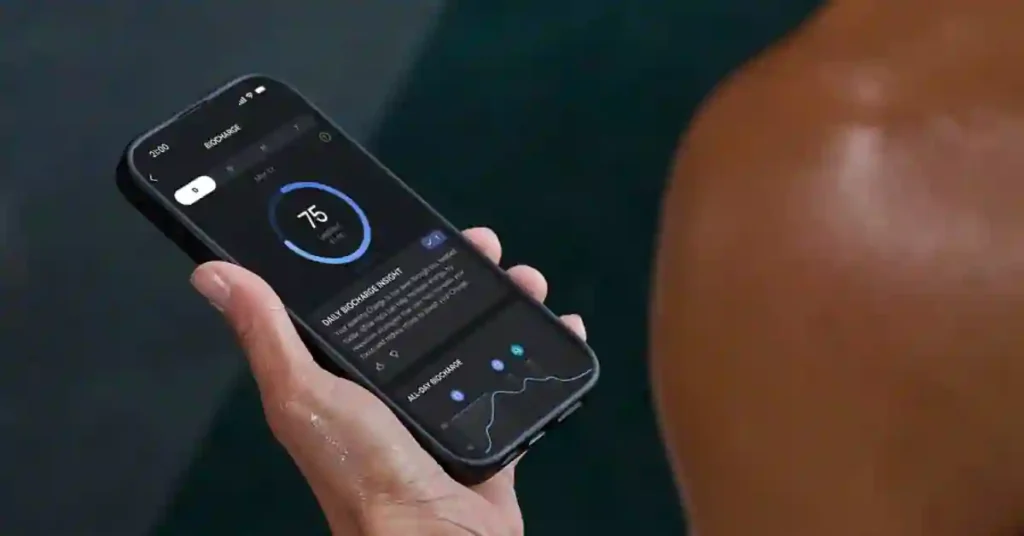If you’re eyeing the Amazfit Helio Strap, let me save you some trial and error. I use it nonstop for two weeks—cycling, lifting weights, pushing through elliptical sessions, and sleeping with it every night.
At first, I was excited about its promises of recovery tracking, long battery life, and lightweight design. But after living with it, I walked away with mixed feelings.
This isn’t a sponsored review. I paid for the Helio Strap out of my own pocket, just like my Oura Ring, Apple Watch Ultra, and Whoop 5.0.
That means you’re not getting a polished sales pitch—you’re getting my raw take on where the Helio Strap shines and where it seriously falls short.
I grabbed my unit from Amazon, where it was priced fairly and shipped fast—no hype, just straightforward value.
Why This Review Matters
Here’s the thing: you can’t judge a fitness tracker by wearing it for a day or scrolling through marketing claims.
You only see the truth when you live with it day after day. That’s why I put the Helio Strap through my actual routine—workouts, recovery days, and sleep.
No sponsor nudging me to say “it’s amazing,” no bias. Just the good, the bad, and the frustrating. If you’re about to spend your money, you deserve more than numbers on a spec sheet.
You deserve to know how this thing feels, how reliable it is in the middle of a workout, and whether it earns a place on your wrist.
So let’s dig into where the Helio gets it right—and where it made me question if it’s ready for prime time.
The Bright Spots: What the Helio Strap Does Well

Lightweight Design That Disappears on Your Wrist
The first thing I noticed? This strap is light. Really light. Compared to the Whoop band, it’s about 33% lighter—and you feel that difference over a long day.
During workouts and sleep, I almost forgot it was there. For anyone sensitive to bulky wearables, this is a huge plus.
The strap’s fabric is breathable and comfortable, but the clasp could be better. During intense workouts, I noticed it was a little shifted, which meant I had to adjust it.
It never fell off, but a stronger clasp would make it feel more secure.
It doesn’t look as polished as wearables like the Oura Ring or Whoop band, but if comfort is your top priority, the Helio Strap delivers.
You can check different strap colors and styles on Amazon — some look far better than the stock version.
Tracking Accuracy

For basic workouts like jogging or cycling, the Helio Strap tracks heart rate and HRV pretty well. If I compare my Apple Watch Ultra and a chest strap, the numbers are close.
But during harder sessions, like sprints or lifting weights, it struggled to keep up. The heart rate often lagged, and recovery data wasn’t as sharp as more expensive trackers.
If you’re an everyday user who wants general trends, it’s good enough. But if you’re an athlete who needs precise real-time tracking, it may feel a step behind.
Sleep Tracking
Sleep tracking is one of the best parts of the Helio Strap. It monitors light, deep, and REM sleep, plus HRV and recovery scores. If I compared it with my Oura Ring, the results were very close.
The best part is comfort—it’s so light that you don’t notice it at night. That’s a big win over bulkier smartwatches, which can feel uncomfortable in bed.
The recovery score is useful as a quick guide, but I wouldn’t rely on it alone for training decisions. Think of it as helpful feedback, not a strict rule.
Battery Life That Beats Expectations
Battery anxiety? Not here. Amazfit claims about 10 days, but in my test, I squeezed out 11+ days on a single charge.
That puts it close to the Whoop 5.0’s 13-day claim. For a device you’re supposed to wear 24/7, this kind of endurance is a lifesaver.
An App That’s Actually Easy to Use
The Zepp app is refreshingly simple. You don’t need a tutorial or hours of setup. It gives you the basics—recovery, strain, sleep—in a clean format that doesn’t overwhelm you.
Honestly, it feels like a “Whoop-lite” app, and for beginners, that’s a good thing.
Recovery Data You Can Actually Trust
When it comes to resting heart rate, the Helio Strap held its own. My numbers lined up pretty closely with my Oura Ring and Whoop.
Heart rate variability (HRV) was a bit lower—usually 10% shy of Whoop—but still consistent enough to give you a solid baseline. In plain English: if the trend is going up or down, you can trust it.
But during harder sessions, like sprints or lifting weights, it struggled to keep up. The heart rate often lagged, and recovery data wasn’t as sharp as more expensive trackers.
If you’re an everyday user who wants general trends, it’s good enough. But if you’re an athlete who needs precise real-time tracking, it may feel a step behind.
Where the Amazfit Helio Strap Falls Apart
Charging That Breaks Your Flow
To charge it, you have to remove the strap and clip it into a magnetic charger.
Compare that to Whoop, where you just slide on a battery pack and keep going. It’s not the end of the world, but it breaks the “wear it 24/7” promise.
A Strap That Sometimes Quits on You
Here’s my biggest headache: the strap slipped off… more than once. I lost two nights of sleep data because it just wasn’t on my wrist in the morning.
For a device marketed as a 24/7 tracker, that’s a dealbreaker. Not everyone has this issue, but the inconsistency makes me wary.
Big But Not Bold
Yes, it’s light. But it’s also bulky. I found myself bumping it into door frames and feeling it snag during workouts. The combo of bulky design + flimsy strap is not a great mix.
The Apple Health Dealbreaker
This one really stung: the Helio can write data to Apple Health, but it can’t read from it. That means it doesn’t know when I start or stop a workout on my Apple Watch Ultra.
All it sees is an elevated heart rate and guesses from there. Meanwhile, Whoop and Oura integrate seamlessly. For anyone in the Apple ecosystem, this is a huge limitation.
Exertion Tracking That Makes No Sense
This was the shocker. The Helio consistently overestimated my effort:
- 30 minutes of light cycling? It said I was at 95% exertion.
- A 1-hour walk? 100% exertion.
- Normal gym sessions? Maxed out every time.
Whoop’s strain score, in comparison, was much more realistic. For athletes or anyone who trains seriously, Helio’s numbers feel more misleading than motivating.
So, Who Should Buy the Helio Strap?
The ideal user is someone just starting their fitness journey. If you want a basic, affordable tracker for sleep, recovery, and overall wellness—without paying subscription fees—it’s worth a look.
But if you’re an athlete or serious trainer, the flaws are hard to ignore. You’ll get more accurate exertion and workout data from Whoop, and better sleep analysis from Oura.
At around $100 with no monthly fee, the Helio is appealing. But accuracy matters. And right now, it feels like an early draft of what could someday be a great product.
If you want to grab one, I’d recommend checking the latest deals and bundles on Amazon — sometimes Amazfit offers discounts or accessory packs worth grabbing.
Why Competition Still Matters
Here’s the silver lining: even with its flaws, the Helio Strap is important. It’s proof that you don’t need to pay $300 upfront plus $30/month for basic recovery data.
The more players in this space, the more pressure on brands like Whoop and Oura to drop prices or improve features.
If Amazfit fixes the strap design, polishes accuracy, and improves Apple Health integration, they could have a real competitor on their hands. Until then, it’s a reminder that competition is healthy—for the market and for us.
Helio Strap vs Whoop vs Oura (Comparison Table)
| Feature | Amazfit Helio Strap | Whoop 5.0 | Oura Ring 3 |
|---|---|---|---|
| Battery Life | 12–14 days | 13 days | 5–7 days |
| Comfort | Lightweight strap | Strap-based | Ring-based |
| HR Accuracy | Good, not perfect | Very good | Good |
| Sleep Tracking | Solid, basic insights | Strong, deep recovery focus | Excellent, detailed |
| Readiness Scores | Basic | Advanced | Advanced |
| Price | More affordable | Subscription required | Higher upfront cost |
Final Take
After two weeks, my verdict is simple:
- Casual users who want affordable wellness tracking? ✔️ Worth considering.
- Athletes and serious fitness folks? ❌ Not ready yet—stick with Whoop or Oura.
The Helio Strap feels like a work in progress: comfortable, long-lasting, and affordable… but with some frustrating flaws that keep it from being a top-tier choice.
You can buy the Amazfit Helio Strap on Amazon if you’re looking for an affordable entry into recovery-based fitness tracking — no monthly fees, just straightforward data.
Is the Amazfit Helio Strap Worth It?
It really depends on what you want. If you’re looking for an affordable way to track heart rate, HRV, and recovery without paying for a subscription, I’d say yes—it’s worth it. It’s light, comfortable, and lasts up to a week on a charge. But if you’re after super-accurate sleep tracking or advanced insights, it might fall short compared to premium options like Whoop or Oura.
Is it better than Whoop or Oura?
Not really. It’s cheaper, but both Whoop and Oura offer deeper insights, more accurate tracking, and stronger app ecosystems.
Also Like :-
